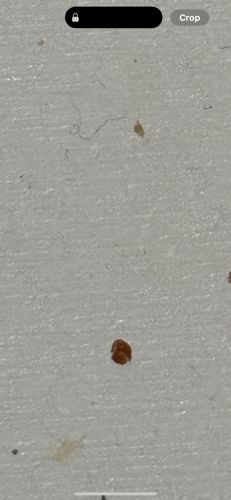Bed Bug (likely common bed bug)
Scientific Name: Cimex lectularius
Order & Family: Hemiptera, Cimicidae
Size: Adult bed bugs are typically 4-5 mm (about 3/16 inch) long, about the size of an apple seed. Nymphs (juvenile bed bugs) are smaller (1-4 mm) and translucent before feeding.

Natural Habitat
Bed bugs are found worldwide and are primarily associated with human dwellings. They tend to infest areas where people rest and sleep, such as bedrooms, hotels, dormitories, and apartments. They hide in mattresses, box springs, bed frames, headboards, furniture seams, cracks in walls, and behind electrical outlets.
Diet & Feeding
Bed bugs are hematophagous, meaning they feed exclusively on the blood of warm-blooded animals, primarily humans. They pierce the skin with their elongated mouthparts (proboscis) and feed for 3-10 minutes before returning to their hiding places.
Behavior Patterns
Bed bugs are nocturnal and feed primarily at night. They are attracted to carbon dioxide and body heat. They typically hide in cracks and crevices during the day, such as mattress seams, bed frames, furniture, behind picture frames, and under loose wallpaper. Females can lay 1-5 eggs per day, totaling 200-500 eggs in their lifetime. The eggs hatch in 6-10 days, and nymphs mature into adults in about 21 days under optimal conditions, going through 5 instar stages, requiring a blood meal at each stage.
Risks & Benefits
Risks: Bed bugs do not transmit diseases to humans but their bites can cause itchy welts, leading to skin irritation, allergic reactions, and secondary infections from scratching. Heavy infestations can lead to anxiety, stress, and sleep deprivation. They are a significant nuisance pest. Benefits: None known for humans; they are considered a pest.
Identified on: 8/29/2025